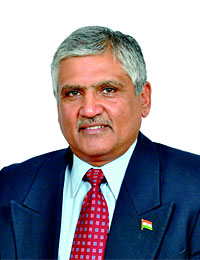Publisher’s Note
 When asked to describe a lubricant, people typically refer to its brand or product name. More precisely, a lubricant, whether it is an oil or grease, is a bundle of performance properties such as oxidative life, resistance to thermal or hydrolytic degradation, antiwear or antiscuffing characteristics and air and water separability. When performance properties are compromised, the lubricant's ability to minimize friction, wear and corrosion, control heat and contamination and transmit force and motion in hydraulic systems deteriorates.
When asked to describe a lubricant, people typically refer to its brand or product name. More precisely, a lubricant, whether it is an oil or grease, is a bundle of performance properties such as oxidative life, resistance to thermal or hydrolytic degradation, antiwear or antiscuffing characteristics and air and water separability. When performance properties are compromised, the lubricant's ability to minimize friction, wear and corrosion, control heat and contamination and transmit force and motion in hydraulic systems deteriorates.
To ensure machine reliability, the offending lubricant requires maintenance actions that are properly designed and executed. There are some proactive ways to extend the lubricant's life and proper disposal methods once the oil has been changed.
Contrary to popular belief, oil doesn't last forever. The lubricant in a machine must be changed or at least maintained; otherwise it will no longer possess the required performance properties to carry out the demands of the machine, application and operating environment. In some instances, the oil must be changed because the lubricant's base oil becomes degraded and is no longer ft for service. Oxidative, thermal and hydrolytic degradation will change the base oil's chemical and physical properties, which then alters the lubricant's performance properties. In other cases, the lubricant's additive package becomes depleted. Unfortunately, the lubricant may also become contaminated with foreign material that cannot easily be removed.
One of the most common forms of base oil degradation is oxidation. It occurs when oxygen reacts with the lubricant's base oil, which is typically a hydrocarbon. When the oil becomes oxidized, some hydrocarbon molecules are transformed into acid and sludge, which affect the performance properties of the oil. Unlike oxidation, thermal degradation does not require oxygen to occur. Thermal failure takes place when the oil comes in contact with hot surfaces inside the machine, such as combustion or exhaust areas, or when coming in contact with compressed bubbles, such as in hydraulic systems.
One strategy for extending lubricant life is to select premium lubricants formulated with premium base oils, premium additive systems or a combination of both. The American Petroleum Institute (API) has provided a standard classification for base oils, called groupings, to summarize the quality of the oil.
Regardless of the lubricant selected, the end user has a great deal of influence over the actual life of the lubricant by managing system contamination and refreshing the additive system. Contamination includes all foreign and unwanted forms of matter and energy, including particles, moisture, heat, air, chemicals and radiation. Contamination control is the easiest and most widely applicable method for extending lubricant life.
We would like to thank our readers for the great response to our previous edition’s cover story – “How to prevent equipment failures with wear debris analysis” and other articles. Our current issue’s cover story is “Track your Lubricant’s journey to optimize machine health” which will help our readers to understand the path of lubricants which is the first step towards mitigating risk.
We have introduced a new section called “Face to Face”, in which we publish interviews of industry leaders in the feld of lubricants and reliability. These will be useful for our readers in having a better understanding of the products and services available to them.
I cannot sign off without giving special thanks to our advertisers, subscribers and authors. You would be happy to know that we now reach out to over 15000 subscribers in products & services sector, academia and research organisations.
We welcome your feedback & suggestions.
My Best wishes for a Merry Christmas and a Happy New Year.
Warm regards,
Udey Dhir
